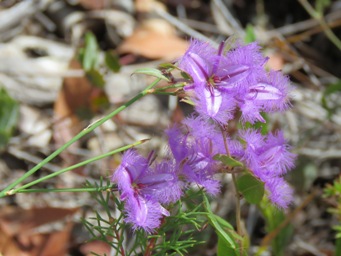Australia So Much to See
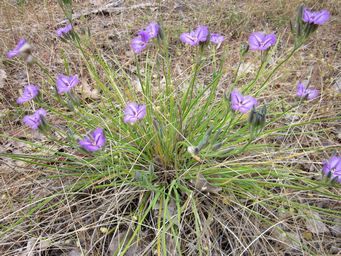


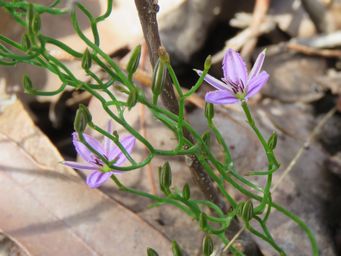
Thysanotus manglesianus, Climbing Fringed Lily, Fringed Lily
A small three petalled pale purple lily with prominent calyx giving the
appearance of six petals. Fringes are very short. Dark centre lines on petals and calyx. The flowers have six unequal
anthers. The outer three are straight with the inner three being shorter and curved. Stems branch directly from a main
stem, further distinguishing this species from the otherwise similar twiner Thysanotus patersonii.
Spring
Bridgetown, South West
Region, Western Australia although this species is not recorded for the Bridgetown area it does appear to be the most common twining
Thyanotus in the district. Mainly found in the Mid West, Perth, Wheatbelt, Great Southern and South West regions from Shark
Bay to Albany and extending inland, with scattered recordings through the Golfdfields and in the Pilbara.
Thysanotus patersonii, Climbing Fringed Lily, Paterson's Fringed Lily, Twining Fringed Lily, Djunga djunga, Djungala.
A small
three petalled pale purple lily with prominent calyx giving the appearance of six petals. Fringes are very short. Dark
centre lines on petals and calyx and six similar sized green or purple anthers. Several flowers in twining stem. Stems dichotomously
branched, giving a zigzag appearance.
Spring
Bridgetown, South West Region, Western Australia, and Sandstone, Mid West region,
Western Australia. Found from Exmouth to Esperance, the Gascoyne, Mid West, South West, Great Southern and Goldfields regions, into
the Gascoyne and scattered occurrences through the Pilbara regions
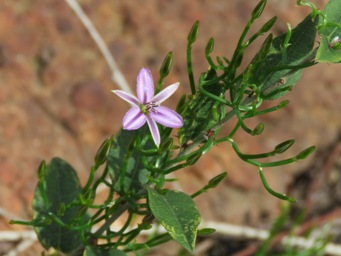





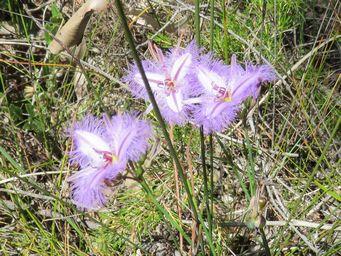

A late flowering Thysanotus with tall slender wiry stems and no visible foliage, and
several delicate and fine flowers which can be lilac or mauve, with six anthers; three long and three very short. Flowers
branching at the end of these long stems of up to 1.5 metres. which are sometimes freestanding but mostly sprawl across other
vegetation. Fringes are long and straggly.
